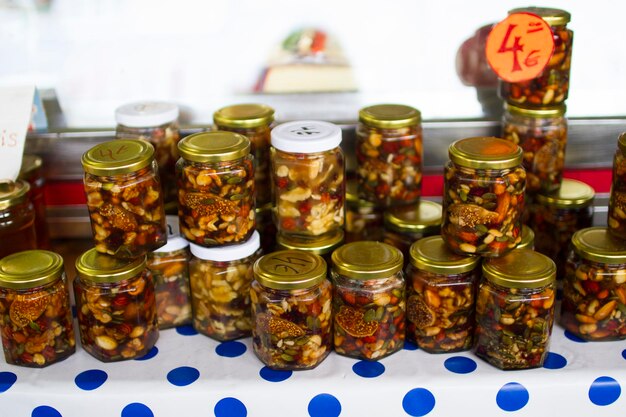How Long Do Olives Last in the Refrigerator? Your Comprehensive Guide to Olive Storage
Olives are a popular and versatile food item that can find a place in salads, pizzas, martinis, or eaten right out of the jar as a tasty snack. With their tangy flavor and rich history in the Mediterranean diet, olives charm many with their unique taste and texture. However, like any perishable food, their shelf life can be a matter of concern, especially after opening the jar. So, how long do olives last in the refrigerator? Stick around as we delve into this topic and provide you with all the tips and insights you need for optimal olive storage.
Understanding the Shelf Life of Olives
🌿 What Factors Affect Olive Shelf Life?
When stored properly, unopened jars or cans of olives maintain their quality for quite a long time. Here are some key factors that influence their shelf life:
- Packaging: The type of packaging matters. Canned olives generally have a longer shelf life than fresh or jarred olives due to their airtight sealing.
- Preservation Method: Whether they are brined, marinated, or vacuum-packed can significantly impact how long they last.
- Storage Conditions: The temperature and humidity where they are stored play a crucial role in preserving their freshness.
🗓️ Shelf Life of Unopened Olives
Unopened olives can last for months, even years, depending on their packaging:
- Canned Olives: These typically have a long shelf life due to their airtight seal and preservation method, lasting up to two to five years when stored in a cool, dark place.
- Jarred Olives: Sealed jars also provide a sturdy barrier against spoilage, maintaining their quality for up to a year past the printed "best by" date if stored properly.
Extending the Life of Opened Olives
Once you pop the seal, the clock starts ticking on your olives:
🕒 How Long Do Opened Olives Last in the Fridge?
According to practical insights, opened olives typically remain good in the fridge for two to four weeks if handled correctly—a bit longer if submerged in brine. Here's how to ensure they last:
- Keep Them Submerged: Ensure that the olives remain completely submerged in their liquid as this brine acts as a preservative.
- Tightly Seal the Jar: Use the original lid or a tightly fitting one to prevent air exposure.
- Store in the Coldest Part of the Refrigerator: The back of the fridge is usually colder than the door, helping to prolong their freshness.
🧊 Can You Freeze Olives?
Yes, olives can be frozen, but there might be a slight change in texture. If you opt for this route:
- Drain and Pat Dry: Remove excess liquid and gently pat the olives dry to prevent ice crystals.
- Use Air-Tight Containers: Freezer bags or containers can protect them from freezer burn.
- Consume Within Three Months: This helps retain maximum quality and taste.
Identifying Spoiled Olives: Signs to Watch For
👃 What Are the Signs of Spoilage?
It's crucial to recognize when olives have passed their prime. Here are signs they may no longer be safe:
- Unpleasant Odor: A sour or off smell indicates spoilage.
- Mold Growth: Any fuzz or discolored mold spots mean it's time to toss them.
- Slimy Texture: A change from their usual firm texture to something slimy is a red flag.
- Bloating or Bulging Lids: An indication of fermentation or bacteriological activity.
Practical Tips for Olive Storage
Here are some concise tips to help you maintain the shelf life of your olives:
- Avoid Cross-Contamination: Always use clean utensils to prevent bacteria transfer.
- Maintain Consistent Storage: Avoid frequent temperature changes by keeping them in the same part of your refrigerator.
- Replace Brine if Necessary: If you find your olives running low on their preserving liquid, you can make your own brine with water, salt, and a splash of vinegar.
📝 Quick-Reference: Olive Storage Tips
Here’s a handy visual guide to keep your olives fresh and tasty:
| Tip | Action |
|---|---|
| 🍶 Store in Brine | Keep olives submerged in their liquid to preserve freshness. |
| 🚫 Check Seals | Ensure jars are tightly sealed to prevent air exposure. |
| 🥶 Use the Cold Spot | Place in the back of the refrigerator for optimal cooling. |
| 🔄 Change the Brine | Add fresh brine as needed to maintain flavor and texture. |
| 🔎 Inspect Before Eating | Check for signs of spoilage: smell, texture, and appearance matters! |
Exploring More About Olives
🍽️ Culinary Uses of Olives
Olives are more than just a topping; they can transform myriad dishes with their robust flavor. Consider using them in:
- Tapenades: A spreadable option that mixes olives with capers and anchovies.
- Salads: A great addition to Greek salads or paired with feta and tomatoes.
- Bread & Pastries: Bake them into rustic breads or place them atop focaccia.
🌱 Nutritional Benefits
Olives are not just delectable; they come packed with health benefits:
- Heart Health: Rich in monounsaturated fats, olives contribute to heart health.
- Antioxidant Properties: They contain vitamin E and other compounds that combat oxidative stress.
- Anti-inflammatory: Olives have natural anti-inflammatory agents that can support overall health.
A Final Thought and Summary
Understanding the practical aspects of olive storage can enhance your culinary experiences while minimizing waste. By recognizing signs of spoilage and knowing how to store them properly, you ensure your olives last while retaining their flavor and nutritional benefits. Whether you're a casual snacker or a culinary enthusiast, having olives at their best is always a treat.
Empower your kitchen with these insights, and enjoy the delightful world of olives with confidence. Your refrigerator will thank you, and so will your taste buds! 🌿
